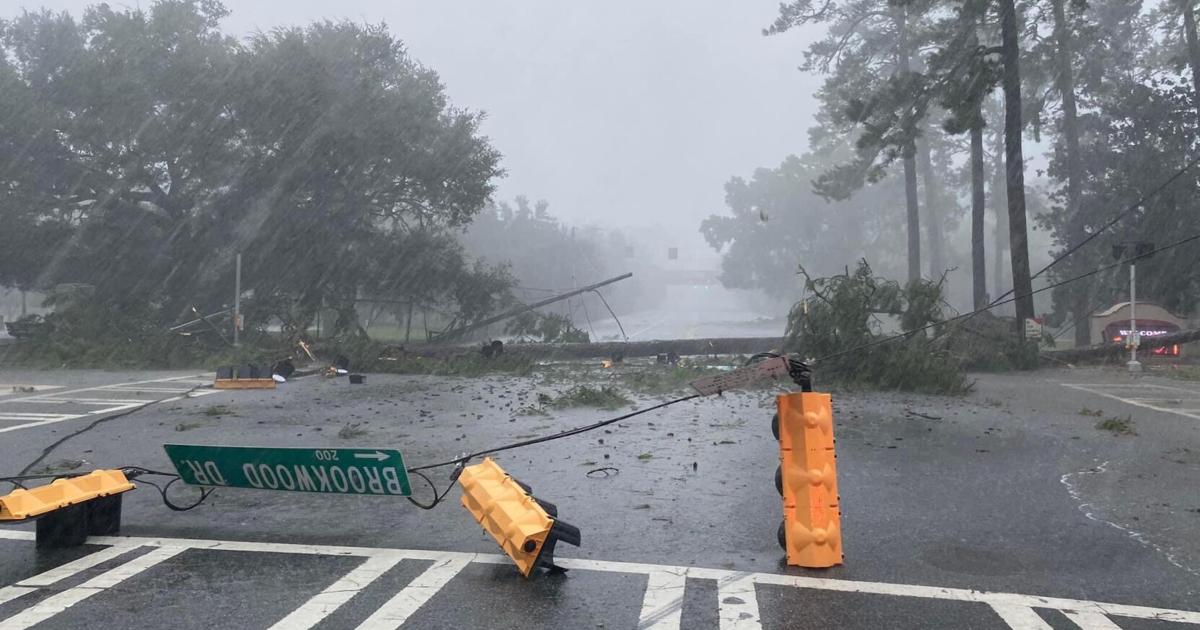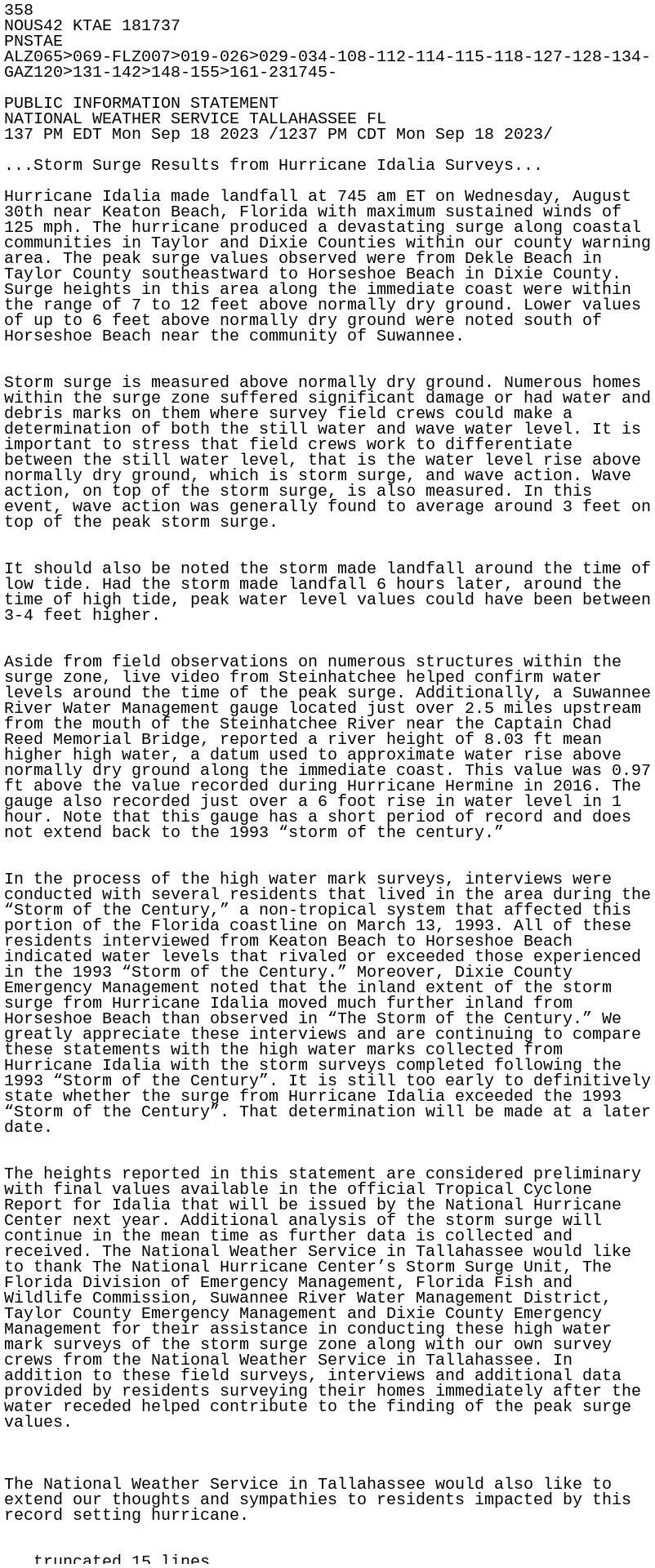- Thread starter
- #181
Casuarina Head
Member
Another thing: why are sources indicating that the surge at Cedar Key was 8.9’? Based on video the peak heights near the waterfront do not appear to have been much more than three and a half to four feet. These include the storm tide and added waves, so the surge would have been even lower. The forecasts called for a surge of 12–16’ in the hardest-hit area. Peak sustained winds and gusts observed on land do not appear to have supported anything much stronger than a Category 1 in the Big Bend. Of course, somewhat stronger winds likely went unrecorded, but prior to weakening data from sondes offshore suggested only a mid-range-to-upper-end Category 2, with surface-based winds being much lower than flight-level (the observation of 78 knots in the western quadrant would seemingly support 90–95 knots elsewhere). So Idalia’s peak was likely just below Category-3 status wind-wise, with a MSLP in the low 940s mb. But the storm then weakened afterward and likely came in as a strong Category 1, which would explain the lacklustre surge vs. forecasts. So I am really worried about storms such as Idalia, Ian, et al. being badly overestimated.


